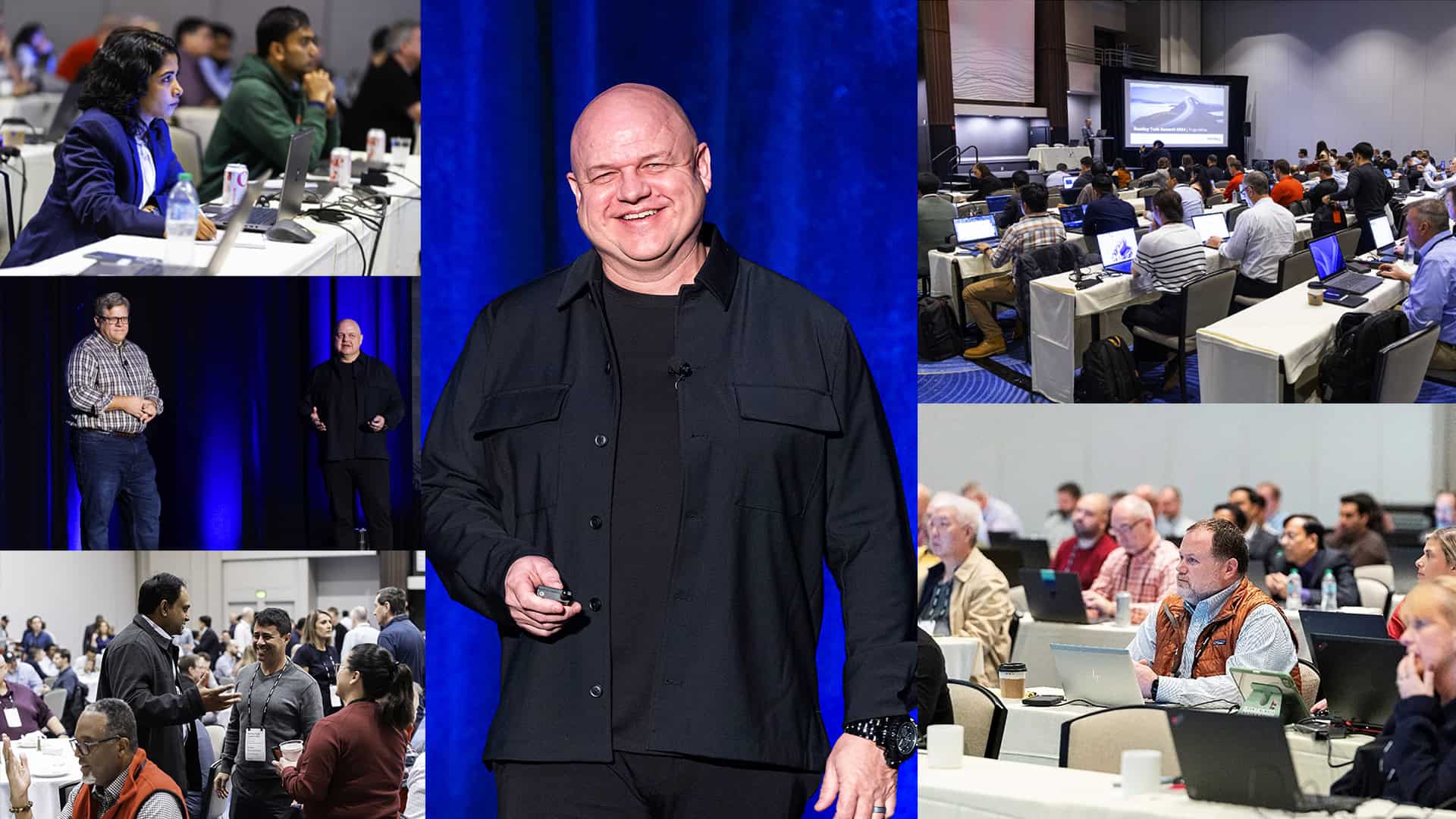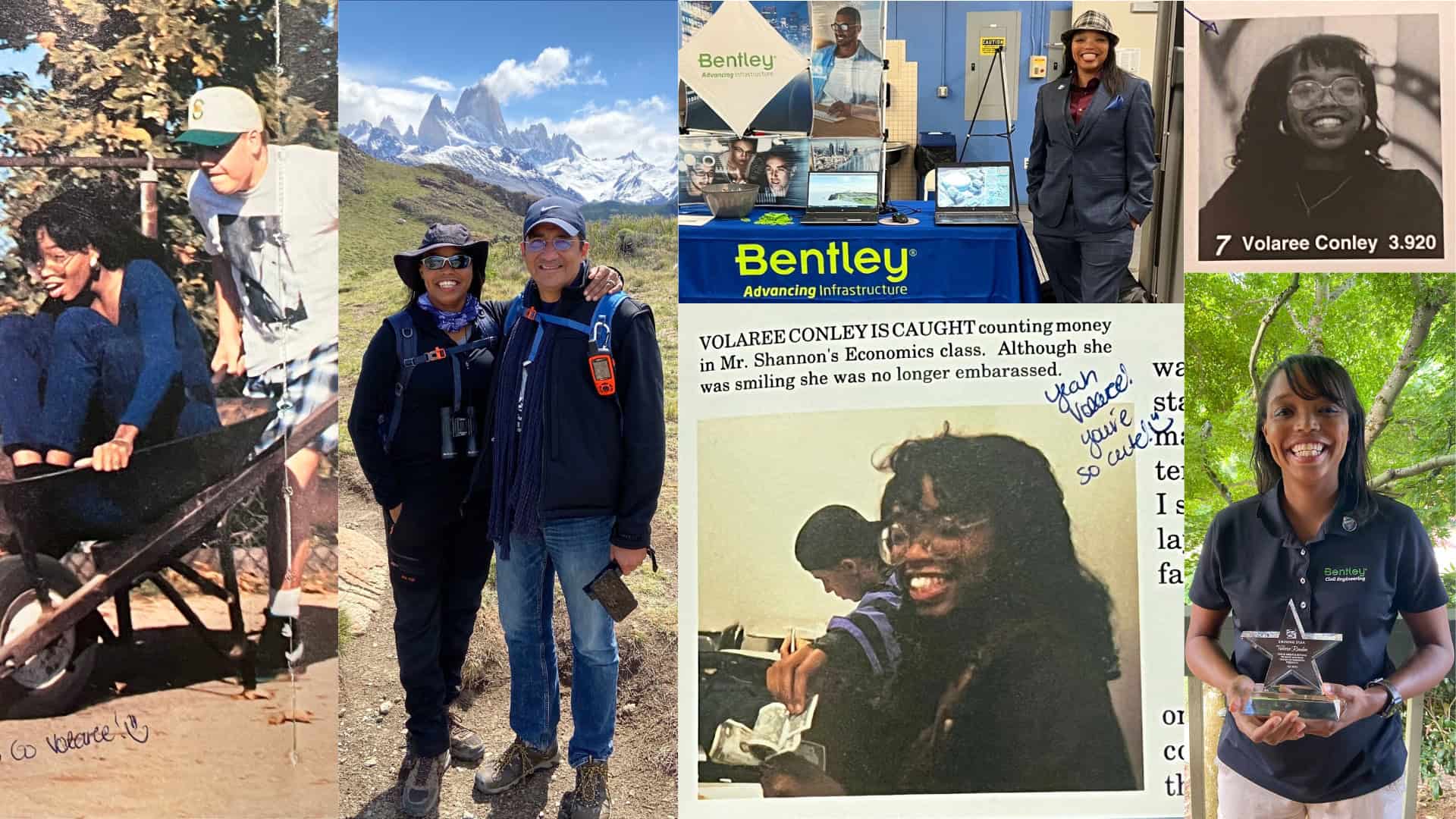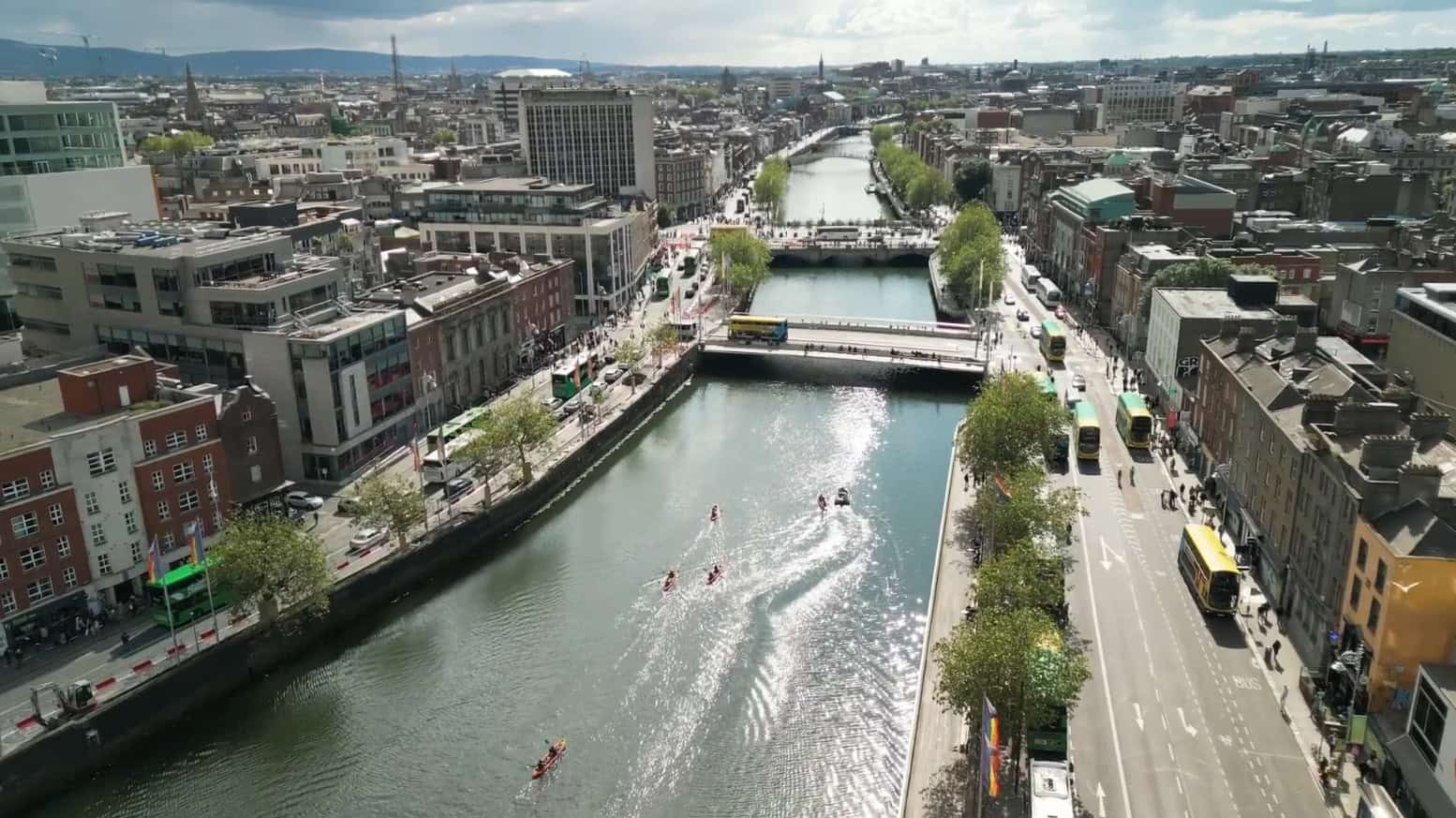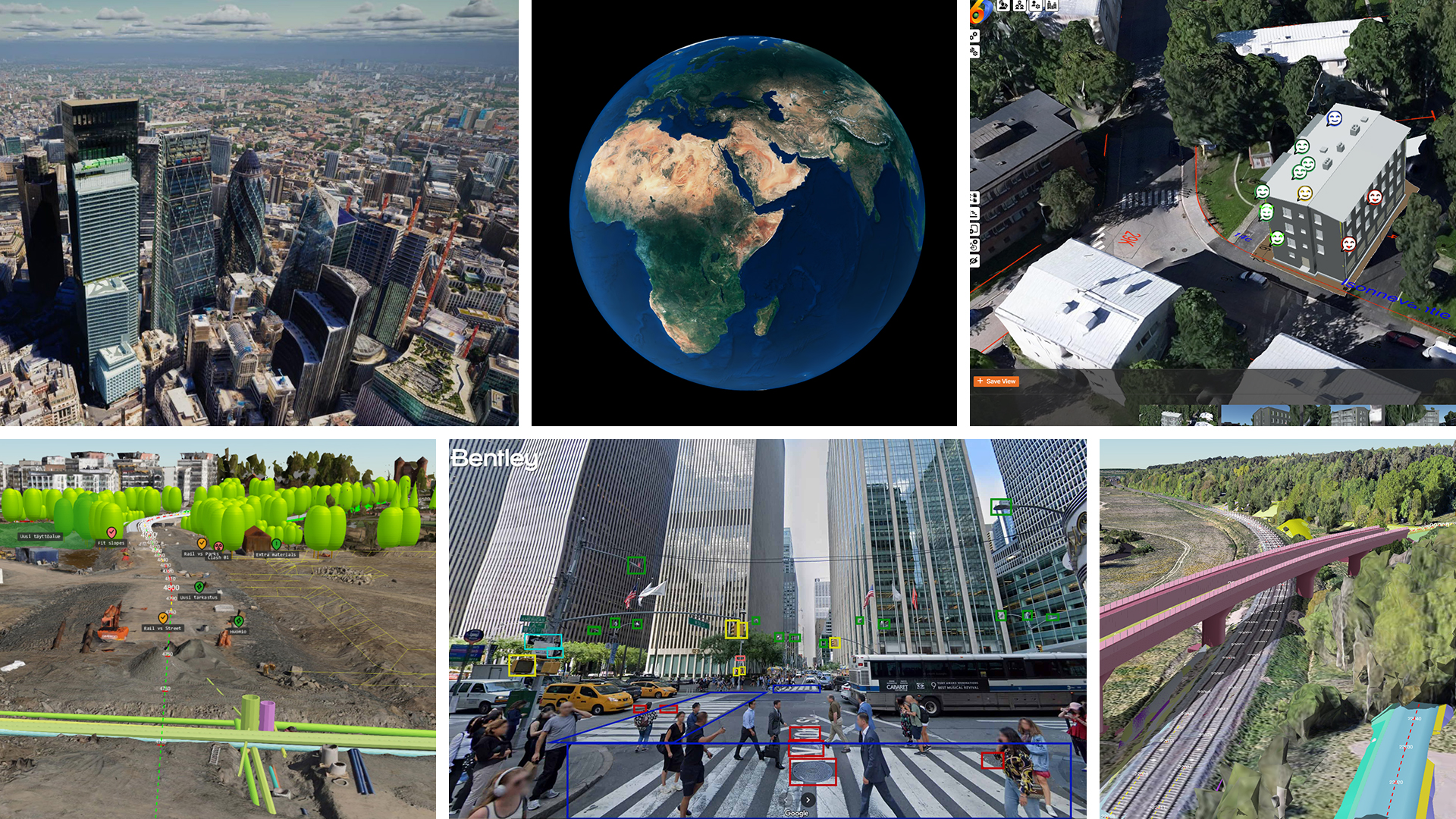For Roni Deitz, this work is personal.
She grew up in New Jersey, so Deitz had never experienced a major hurricane. Then Hurricane Ike stormed ashore the Texas coastline in 2008, while she was an engineering student in Houston.
“I was ultimately just so struck by how a storm could suddenly shut down the city, how it could forever change the urban fabric and deeply impact daily life,” says Deitz, now global director of climate adaptation at Dutch engineering giant Arcadis.
Then in 2012, Superstorm Sandy struck close to home. The deadly hurricane inundated and devastated parts of New Jersey and neighboring New York City, the place Deitz had known as simply “the city” growing up.
“It almost felt like a call to action,” she says. “It was personal. I felt this strong pull to return home to New York, to help New York City build back in a way that was smarter and stronger, that was more sustainable.”
Protecting The Big Apple
Within months of Sandy, Deitz joined Arcadis, where for the last several years she has been involved in one of the most high-profile climate resilience efforts in the United States: the project to help protect Lower Manhattan from future superstorms, sea-level rise, and other extreme weather events like heavy rainfall or excessive heat.
Deitz has worked with New York City agencies to design and deliver infrastructure as a member of the East Side Coastal Resiliency project, which is building flood walls and other infrastructure to protect a 2.4-mile stretch of shoreline. (If you’re familiar with the city, the project extends from East 25th Street to Montgomery Street, just south of the Williamsburg Bridge.) She also serves as project manager of a second section covering the city’s Financial and Seaport districts near the tip of Manhattan. Deitz was featured in a new short film about the floodwalls produced by BBC StoryWorks for Bentley Systems, the infrastructure engineering software company.
The two projects are part of the city’s larger undertaking, the multi-billion-dollar Lower Manhattan Coastal Resiliency strategy. The project includes flood protection work stretching from Battery Park City on the Hudson River to the Brooklyn Bridge area and Asser Levy Playground on the East River.

Bracing for Impact
Building critical new infrastructure in a dense city like New York, which has seen hundreds of years of urban development, presents huge challenges. Throughout the process, teams have used a powerful tool: digital twins, which are digital replicas of a real-world asset like a bridge, a building, or even an entire city.
Deitz says Bentley Systems’ digital twin technology allowed her team to standardize and automate the design on 18 floodgates for the East Side Coastal Resiliency project, drastically cutting the time needed to design each floodgate from 30 hours per gate to just 30 minutes—all while increasing quality and consistency. The digital models also allowed the team to simulate various scenarios to understand how the gates would withstand different pressures or impacts. (One scenario even looked at what would happen if one of New York City’s multi-ton garbage trucks, afloat in a storm surge, were to slam into a gate.)
“What could happen if, during a storm, you were to have a barge—or a car or a truck—hit one of these gates?” Deitz says. “They need to be designed to withstand those loads and those impacts. We’re not only designing for waves and for storm surge, but we’re designing for how this infrastructure is likely to operate in a dense city like New York, and anything that could come at it we need to be prepared for.”
More Than Walls
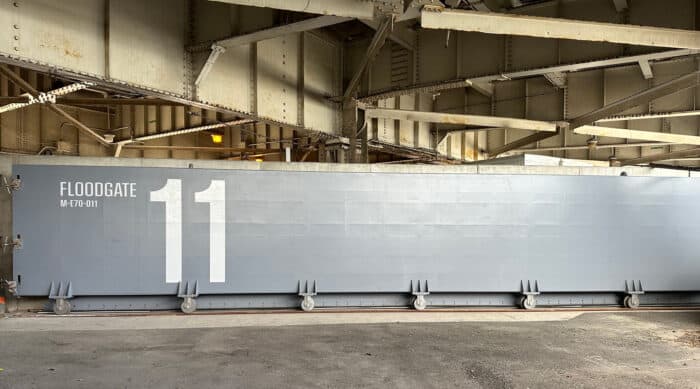 East Side Coastal Resiliency project floodgate
East Side Coastal Resiliency project floodgateThe urgency of the effort is clear: The city expects that by the end of the century, one-fifth of Lower Manhattan’s streets will be at risk of daily flooding due to rising sea levels. But protecting Lower Manhattan from flooding isn’t just about building walls.
“Sandy changed the paradigm of what water management and resilience meant, and it was no longer about, ‘Well, we must build walls at the water’s edge to keep the water out,’” says Deitz. “It was: How do you think of flood protection as public space, as social benefit, and about creating a better sunny-day condition, all while building flood protection?”
In the city’s Financial District, home to the New York Stock Exchange and the headquarters of major financial institutions, that means extending the shoreline into the East River by about the length of a city block. The project also includes building a new, multilevel waterfront that adds new public open space. On the city’s East Side, the work has involved moving a lot of the infrastructure below ground while rebuilding and raising popular public parks, ball fields, and other recreational areas by several feet to keep floodwaters at bay.
“What folks may not even realize or appreciate about this project is just how much of that infrastructure of East Side Coastal Resiliency is below ground,” says Deitz. “The flood wall in East River Park is actually buried beneath the park. We raised the entire park, and we buried that flood wall. And so now all of that active recreation is sitting at a higher elevation, so a storm comes in and you don’t have your ball field and all of your recreation amenities at risk. Instead, they’re there out of the floodplain, and you hope that after a storm, they’re able to come back online quite quickly.”
With the East Side phase nearing completion, Deitz’s focus now is the section between Battery Park and New York’s iconic Brooklyn Bridge, where she hopes – funding permitting – shovels will be in the ground by the end of the decade, with completion by 2040.
Curiosity and Grit
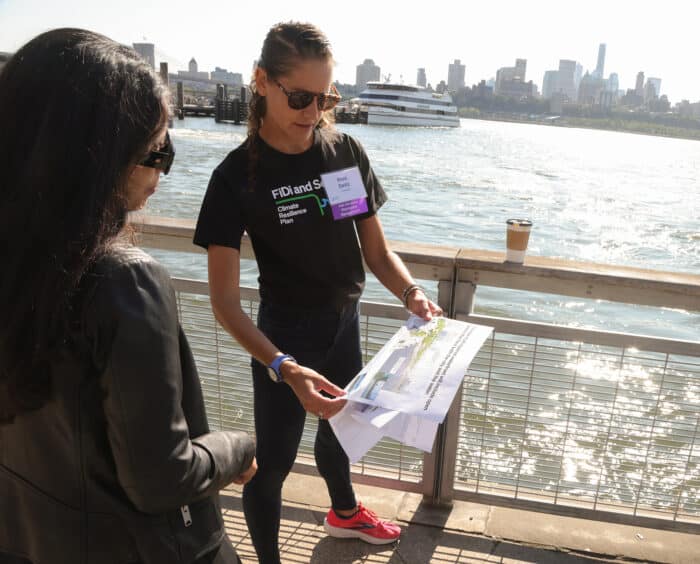 Roni Dietz reviews the East Side Coastal Resiliency project plan.
Roni Dietz reviews the East Side Coastal Resiliency project plan.When she’s putting together a team for complex projects like the one in New York City, Deitz says she prizes drive, team spirit, and a passion for the work over proficiency in a specific skill. “How you couple curiosity with grit and a desire to get messy, to roll up your sleeves and solve those tough problems,” she says.
That curiosity and readiness to work hard was something Deitz herself displayed from an early age.
“I had a love for building things, a love for understanding how systems worked, and I was never afraid to get my hands dirty and tinker,” she recalls. “I would be that kid that would tinker with K’nex, and wake up on Saturday morning and be really excited to go play with them. My mom hated the fact that I would never break them down because I was so proud of the work. And so it truly took my parents selling [the] childhood home for my K’nex of my childhood to be deconstructed,” Deitz laughs.
These days, that inquisitiveness extends to oenology, the study of wines. It’s not just an enjoyable hobby. Deitz is curious about wine’s role in shaping society over the centuries and the impact of climate change on viticulture.
“Be curious” is also among Deitz’s tips for the generation of engineers coming up behind her. Her other advice: Never say no to an opportunity, especially a daunting challenge. “The more that it scares you, the more you probably should be doing it,” she says. Also don’t wait for permission to lead, lift others as you climb, and appreciate those who brought you along on the journey.
Infrastructure That Works on Sunny Days
As she travels around the world for work, Deitz often finds herself on the receiving end of questions about how to retrofit such a dense, historic city like New York, to live with water. One thing she hopes people will take away from the project is “that we didn’t just build walls.”
“It’s about infrastructure that works on sunny days, that creates safe public spaces, that creates community assets, that ultimately, I hope, improves the quality of life for people who live and visit these areas,” she says.
Which brings us back to the origins of Deitz’s story.
“The work that we’re doing has that personal touch for me, because it’s helping the area that I grew up in – in my opinion, one of the greatest cities on this planet – to ensure that it’s around for generations to come.”
Kathleen Moore is a seasoned journalist, editor, and educator. Most recently, she led a 50-strong team of journalists covering Central and Eastern Europe and Eurasia.

